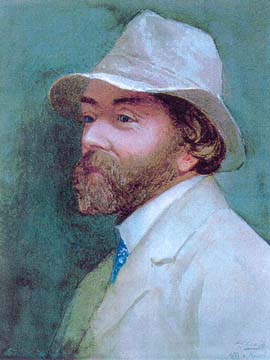Product Description
Archibald Knox / Liberty & Co. Important and Rare Tudric Clock 1902


ARCHIBALD KNOX (1864-1933) UK
LIBERTY & CO. London
Extremely rare and important grand clock by Archibald Knox for Liberty & Co. This is the largest of all of the Tudric models designed and is inset with abalone shell on the sides, the front corners and on the hands of the clock.
Marks: TUDRIC, 098
Illustrated: The Designs of Archibald Knox for Liberty & Co., A..J. Tilbrook (London: Ornament Press Ltd., 1976) pg. 88; The Liberty Style, (Japan: Hida Takayama Museum of Arts, 1999) fig. 168, p 114; Archibald Knox, ed. by Stephen A. Martin (London: Academy Editions, 1995) p. 88.
H: 15″ x W: 7″ x D: 5″
***This is the largest clock designed by Archibald Knox for
Liberty & Co. and one of only three models known.
Archibald Knox / Liberty & Co. Important and Rare Tudric Clock 1902
You must be logged in to post a comment.
ARCHIBALD KNOX (1864-1933) UK
LIBERTY & CO. London
Double inkwell stand c. 1902-05
Pewter with abstract Celtic design in bas-relief
Condition: excellent, no repairs or damage
Marks: 3, ENGLISH PEWTER 00715
Illustrated: Archibald Knox, ed. by Stephen A. Martin (London: Academy Editions, 1995) p 113; Liberty Design 1874-1914, Barbara Morris (London: Pyramid Books, 1989) p. 86; The Designs of Archibald Knox for Liberty & Co., A.J. Tilbrook (London: Ornament Press Ltd., 1976) p. 158.
H: 2 ¾” x W: 9 ¼” x D: 4”
This early British inkwell stand demonstrates the profound influence of Celtic ornament upon Knox and his highly individual and sophisticated use of these ancient graphic devices of interlocking loops and tendrils.
Humberto Campana (1953 – ) Brazil
Fernando Campana (1961 – ) Brazil
Zig Zag Screen, 2001
Circular iron frame with electrostatic silver painted surface, translucent PVC hose stretched in a web pattern.
Illustrated: Campanas, Humberto and Fernando Campana (Sao Paulo: Bookmark 2003) p. 240; Mood River, February 3 – June 26, 2002, exh. cat. Jeffrey Kipnis and Annetta Massie (Ohio: Wexner Center, 2002)
H: 78” x D: 69”
Price: $11,500

Reviews
There are no reviews yet, would you like to submit yours?